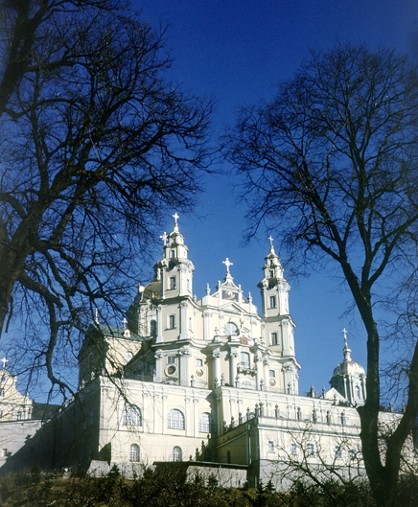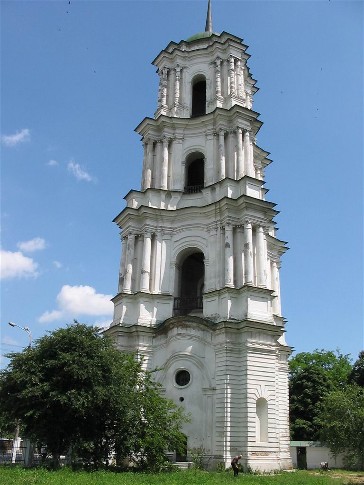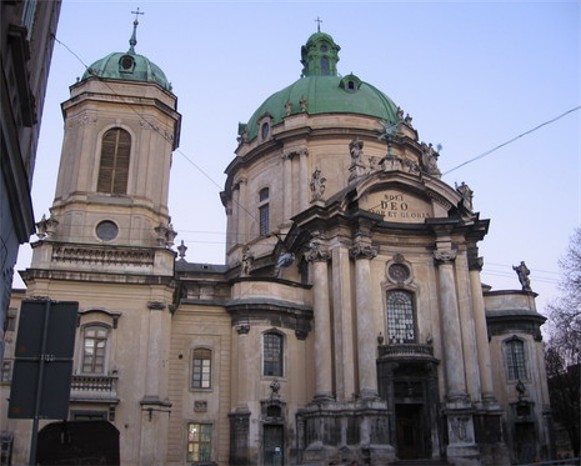Rococo
Rococo. An architectural and decorative style that emerged in France in the early 18th century. It replaced the plasticity of the baroque and was characterized by light, graceful decoration, trivial subject matter, and small-scale sculpture. In decoration the open shell (rocaille in French) motif became popular. Rococo was used in church architecture throughout Ukraine, but because baroque influences were strong the two styles were often intermingled. Examples of the rococo style in Ukraine are Saint Andrew's Church (1747–53) in Kyiv; the Cathedral of the Nativity of the Mother of God (1752–63) in Kozelets, Chernihiv gubernia; the Roman Catholic churches of the Dominican order in Lviv (Dominican Church in Lviv, 1747–64) and Ternopil (Dominican Church in Ternopil, 1745–9); Saint George's Cathedral (1745–70) in Lviv; the Dormition Cathedral at the Pochaiv Monastery (1771–83) in Volhynia; and the town hall (1751) in Buchach, Galicia.
Rococo influences in Ukrainian sculpture can be seen particularly in iconostases, where carved shell motifs and interlace patterns replaced grapevines and acanthus foliage, often without structural logic (eg, the Royal Gates in Saint George's Cathedral in Lviv). The iconostases of Saint Andrew's Church in Kyiv and the church of the Mhar Transfiguration Monastery (1762–5) in Poltava gubernia have delicately carved rococo surface decorations. Three-dimensional carved heads of angels with wings were used to decorate Saint Andrew's Church in Kyiv. In religious painting the rococo style had little impact because of the strong hold of the baroque. A few still lifes, intimate in scale, appeared for the first time, however, and rococo design and decoration left a mark on furniture produced in Hlukhiv and Nizhyn in Chernihiv gubernia and in Olesko in Galicia. Furniture tended to be light, small, and curvilinear, with gold gilding over white. Porcelain with rococo motifs was manufactured in Korets and Volokytyne in Chernihiv gubernia.
Daria Zelska-Darewych
[This article originally appeared in the Encyclopedia of Ukraine, vol. 4 (1993).]
.jpg)



.jpg)
.jpg)
